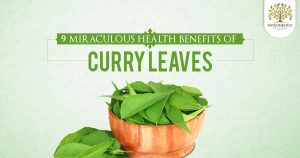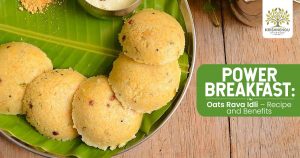Blog
Ayurveda Skin Care Tips Using Papaya
Papaya, universally known as ‘the fruit of the angels’, is a pear-shaped luscious, sweet and pulpy wonder known for its delicious taste, texture and oodles of health benefits it tags along. Packed with Vitamin A, Vitamin C, Vitamin K, Vitamin B, Antioxidants and Flavonoids, it acts as a core health wonder for skin from outside as well as from the inside. It’s not just for eating, the application of the super-fruit proffers glowing complexion as it contains rejuvenating enzymes that exfoliate the skin. One of the best features of the fruit is its low sodium content. Here are some of the best Ayurveda tips to use papaya for glowing skin: 1. Pimple Expeller Topically applying finely grounded raw papaya paste on the face for about 25 minutes will help reduce pimples and blemishes. Cut fresh papaya fruit into small pieces and blender it until it becomes smooth. Apply this on acne scars. Perform this routine continues to get a pimple-free skin. 2. Anti-inflammatory ‘Fruit of the angels’, papaya contains papain, a protein-digesting enzyme. This coupled with the other nutrients such as vitamin C and E, papain helps in reducing inflammation. The use of raw papaya helps you treating the ringworms as well. All you have to do is to rub some slices of raw papaya on ringworm patches and see reduced inflammation. 3. Anti-aging The benefits of papaya on skin has been talked a lot since the time of our ancestors. To cure anti-aging, make a papaya face mask with mashed papaya, honey, and rice flour. Apply this mask and wash it off after 15-20 minutes. Use this thrice a week to get a firm & young skin. 4. Hydrates Skin Take ripe papaya, clean and blend it until smooth. Apply the paste and keep it for 20 minutes and wash it with cold water. It is a simple method to moisturize the skin. Low sodium quality of papaya helps in retaining moisture and always keeps your skin hydrated. 5. As Facial Scrub The enzyme ‘Papain’ and Vitamin A found in the fruit exfoliates the skin by dissolving and breaking down its proteins. A facial scrub of papaya can be made by mashing the fruit, mixing it with salt, honey, and olive oil. 6. Heals Sore and Cracked Heels Take a ripe papaya and mash it. Apply this to the cracks of your heel. Leave it for about 10-15 minutes and then wash it off. This instantly softens the dry feet. This is the simplest remedy for dry cracked heel and can be done on a daily basis. If you have serious cracks in feet, you can take half an avocado or half a coconut (its flesh) and mix it with papaya. 7. Reduces Tanning Take the ripe papaya cubes in a bowl, mash well and mix 1 tablespoon of Ambi Haldi (Kasturi turmeric) to it. Add 1 tablespoon of honey to the mixture to make it a thick paste. Apply this on your face and keep it for 20 minutes and rinse to reveal glowing skin.



10 Effective Home Remedies for Acidity
Acidity is a common condition and can strike at any time, anywhere. It is characterized by discomfort or heartburn near the chest and can cause significant distress. The symptoms of acid reflux include bloating, sour feeling in the food passage, flatulence, etc. If you suffer from this condition very often, here are some simple yet effective home remedies that will help: 1) Tulsi Chewing on five to six tulsi leaves when you suffer from acidity is a great way to beat the discomfort relating to acidity. Tulsi leaves help to stimulate your stomach to produce more mucus and also has anti-ulcer properties and reduces the effect of gastric acids. 2) Bananas It is recommended to have a ripe banana as it will provide you some relief from acidic problems, as it is a rich source of Potassium. One can also eat an overripe banana to beat a bad bout of acidity, as they too tend to contain more potassium. 3)Jeera It has properties that stimulate the production of saliva which helps in better digestion, improves metabolism and relieves gas and other gastric troubles. Chew a few seeds of Jeera to relieve acidity or boil it in water and drink the solution when it has cooled down to room temperature. 4) Cold milk The abundance of calcium content in milk helps prevent acid build-up and absorbs the excess acid produced, thereby reducing the symptoms of acidity. It also provides instant relief from the burning sensation one feels during acid reflux due to the fact that it is cold. But while drinking it, don’t mix any additives like sugar. 5) Cloves In case you’re suffering from acidity, bite a clove once so that the juice is released and then keep it in your mouth. The slowly released juice will immediately lower acid reflux and will give you some relief. Clove contains calmative properties and helps in improving peristalsis which is basically the movement of food down the stomach. 6) Mint leaves or Pudina If you feel any symptoms of acidity attack coming on, have some mint-infused water. Take some mint leaves and chop them finely, and add them to a pot of boiling water. Drink this liquid after it cools. Mint leaves lower the acid content in our stomach and promotes digestion. Its cooling effect helps in reducing the pain and burning sensation associated with acid reflux. 7)Ginger Chewing a small piece of ginger will give you relief from acidity and its symptoms. If you find that too pungent, try boiling it in water and drink the decoction. Or you can even crush some fresh ginger and mix it with a small piece of Jaggery. Suck on this till the juice from the ginger slowly reaches the stomach. Ginger root is known to improve digestion and aids better absorption and assimilation of essential nutrients in the body. Ginger also helps in protecting your stomach against ulcers by promoting mucus secretion and thereby, reducing the effect of acid on your stomach. 8) Amla Consuming one teaspoon of Amla powder twice a day will help keep acidity at bay. It is an excellent kapha and pitta pacifier and has high amounts of vitamin C that helps in healing injured stomach lining and Esophagus. 9)Elaichi or Cardamom To relieve acidity crush two pods of cardamom (with or without the skin), boil the powder in water and drink the cooled juice for instant relief. Cardamom is known to balance all the three doshas – vata, kapha and pitta. According to Ayurveda, cardamom is known to stimulate digestion and also helps relieve from stomach spasms. 10) Tender Coconut Water Drinking 100 to 500 ml of tender coconut water twice a day is considered to be the best and quick relieving home remedy for acid reflux and heartburn. Apart from these home remedies you can also try having cucumber, watermelon, papaya, and banana for getting relief from acidity. Also ensure that you drink a minimum of 2 litres of water per day along with some moderate exercises, on a regular basis to keep your mind and body healthy.



Miraculous Health Benefits of Curry Leaves
Curry leaves or Kadi Patta, as it is popularly known as, is fundamental in all Indian dishes. Not only does it proffer you a special flavor and aroma but also acts as a powerhouse of key health-triggering vitamins and minerals. This sparkly, aromatic herb imparts rich source of carbohydrates, fiber, calcium, copper and many other essential nutrients to your daily meal. Below listed are the miraculous health benefits of curry leaves: 1. Aids digestion According to Ayurveda, curry leaves embrace mild laxative properties that not only help the stomach eliminate waste from the system, but also clears the body of ‘Ama’ (toxic waste) and balances out the pitta levels in the body. Tip: Having the juice of curry leaves with fresh lemon juice and sugar will help treat nausea and indigestion. 2. Lowers Cholesterol Curry leaves are a good source of antioxidants which helps pacify LDL or bad cholesterol level and triggers the increase of HDL or good cholesterol. This process ultimately protects our body from heart disease and atherosclerosis. Tip: Try & incorporate curry leaves in all your meals. Alternatively having fresh leaves on an empty stomach everyday can also help in lowering cholesterol. 3. Prevents Diarrhea The carbazole alkaloids found in curry leaves contain anti-inflammatory and anti-bacterial properties, thereby controlling diarrhea. Tip: If you suffer from diarrhea, gently crush some curry leaves into a ball (Size of a berry), and have it with some butter milk. Consume this twice or thrice a day for relief from diarrhea. 4. Congestion & cold If you suffer from a wet cough, sinusitis or chest congestion, curry leaves is a very effective home remedy. It helps to loosen up and release congested mucous. Tip: Take a spoon of powdered curry leaves and honey. Make it a paste and eat this mixture twice a day to get relief from congestion. 5. Fights Diabetes By lowering blood sugar levels, curry leaves prevent diabetes on taking its toll on our health. The leaves affect insulin activity of the body and balances blood sugar level. 6. Healthy eyes The effectiveness of Vitamin A content imparts strength and rejuvenation to the eyes, and arrests the development of cataract. 7. Curtails Anemia Curry leaves are an excellent source of iron and folic acid. The presence of folic acid is responsible for carrying and helping the body absorb iron, and since curry leaves is a rich source of both, it is the best natural remedy to beat anemia. Tip: Eat one date (khajoor) with two kadi patta leaves on an empty stomach every morning if you suffer from anemia. 8. Weight buster Daily consumption of curry leaves enhances digestion, reduces fat and cleanses the intestine thereby reducing your excess weight. Tip: Having a ball of crushed curry leaves every morning in empty stomach with honey is good for those on strict diet. 9. Face beautifier Curry leaves are efficient in reducing pimple, acne and black marks. Tip: Apply a mixture of curry leaf paste and lemon juice on your face. Wash it off with cold water after some time.



5 Yoga Poses to Strengthen Kidney Health
Clearly, Kidneys are one of the most vital organs in the body that should be cared for, and Yoga plays an important role in maintaining kidney health as it improves its functions and reduces the risk of kidney cancer. Kidneys purify the blood by filtering waste and also help in the functioning of the urinary system, maintenance of blood pressure level and secretion of hormones in our body. Kidney-diseases have become more prevalent now due to unhealthy lifestyle, stress and insufficient nutrition. Here are a few simple yoga poses to ensure the health of your kidneys – 1. Ardha Matsyendrasana (Sitting Half Spinal Twist) Ardha Matsyendrasana or the Sitting Half Spinal twist is known to stimulate the kidneys and liver, and also improves the body’s immunity level. This pose enhances the circulation of blood through the inner organs. 2. Paschimottanasana (Seated forward bend) Also known as the Seated Forward Bend, this yoga pose stimulates kidney and also improves digestion. It helps relieve you from menstrual and menopause discomforts. 3. Setu Bandhasana (Bridge pose) The Bridge Pose or Setu Bandhasana stimulates the kidneys and abdominal organs. It also helps regulate high blood pressure and relieves the body of stress. 4. Naukasana (Boat Pose) Naukasana or Boat Pose improves the health of all organs in the abdomen especially the liver, pancreas, and kidneys. It also helps improve digestion and alleviates stress. 5. Bhujangasana (Cobra pose) Bhujangasana or Cobra Pose stimulates the abdominal organs and relieves the body of stress and fatigue. It improves the function of the liver, kidney, pancreas and gall bladder. It is also known to help improve immunity. For good kidney health, it is highly recommended to follow the above-mentioned yoga poses, drink plenty of fluids, follow an Ayurvedic diet rich in nutrients and get 6 to 8 hours of sleep every day.



8 Ways to keep your Joints Healthy
Having healthy bones & joints is the best solution to keep Arthritis condition away. Here are 8 recommended guidelines to keep your bones and joints healthy – 1. Maintain a Healthy Weight Maintaining your weight within a healthy range is one of the best things you can do for your bones and joints. Weight-bearing joints like your knees, hip, and back, have to support your body weight so the more you weigh, the more work they have to do. 2. Exercise Engaging in strength training and weight-bearing exercises can help keep your bones and joints healthy. Strength training exercises are not only beneficial for increasing muscle mass but also help in protecting against bone loss. High impact activities like dancing, skipping, jogging or running are great, but if you have frail bones or a history of falls, low-impact exercise like walking, swimming, cycling is also beneficial. Practicing Yoga daily as a routine is an ideal way to keep your joints healthy. Yoga poses not only help bring more fluidity and flexibility to the joints but also strengthen the muscles around the joints to give more overall stability. Ardha Matsyendrasana, Trikonasana, Vrikshasana, Veerabhadrasana, Setu Bandhasana are few effective yoga poses that are recommended for Arthritis. 3. Perfect your Posture Slouching is not good for your joints. Standing and sitting straight would help to protect your joints from your neck to your knees. When doing activities like lifting and carrying, following the right posture is important for both your joints and bones. 4. Eat Right In order to have a good bone and joint health, an adequate supply of the right nutrients is mandatory. Foods rich in amino acids, omega-3 fatty acids, antioxidant and anti-inflammatory properties rich foods like dairy products, eggs, nuts and seeds, broccoli, berries, ginger etc. are recommended for bone and joint health. 5. Get enough Calcium and Vitamin D To build strong bones and teeth and keep them strong as you age, you need to consume enough Calcium. Good food sources of calcium include milk, leafy green vegetables and beans. Other than Calcium, Vitamin D is essential for bone health since it helps the body absorb the former. Sources of Vitamin D include Sunlight, fish, eggs, milk, mushrooms and cod liver oil. 6. Protein Getting enough protein is important for healthy bones. Having a low protein diet decreases calcium absorption and may also affect rates of bone formation and breakdown. 100 grams of protein daily if wisely consumed with plenty of plant foods and calcium intake is recommended. 7. Don’t smoke and drink excessively Excessive use of tobacco and alcohol consumption is linked to loss of bone mineral density. Alcohol also affects the liver thereby affecting the function of vitamin D — the bone vitamin, thus causing weak bones. Hence, it’s recommended to stop drinking and smoking for a better bone and joint health. 8. Avoid too much salt, sodas and fizzy drinks Foods with too much salt causes us to lose calcium through urine to release that extra salt. Also, fizzy drinks and sodas may limit our ability to use the calcium we consume because of its phosphorous content. Bone and joint health are important at all stages of life.However, having strong bones and joints are something people tend to take for granted since the symptoms for arthritis, bone loss, etc. appear only when the condition gets advanced or worsened. Fortunately, all you need to do, is to follow the aforesaid ways and lifestyle habits to keep your bones and joints healthy.



Power Breakfast: Oats Rava Idli – Recipe and Benefits
A healthy Ayurveda breakfast considers the Ayurvedic body type or dosha into account in order to ensure proper digestion. And a healthier way to kick start a day is by having nourishing and balanced breakfast. Oats is a power-packed storehouse of essential nutrients, vitamins and minerals and makes for a perfect breakfast idea to kick start a day. Incorporating other ingredients like protein-filled rava and nutritious vegetables like carrot and beans will add up to its health benefits and ensures that your energy levels soar up. Oats rava idli is an easy-to-cook delicious recipe that is highly beneficial for people suffering from cholesterol, high blood pressure and heart diseases. The presence of various vital minerals like calcium, iron, phosphorous and magnesium keeps your body healthy and fit. Follow this recipe to make this delicious and wholesome breakfast which can be had along with some scrumptious sambar and chutney. Preparation time: 18 min Serves: 12 idlis Ingredients ½ cup oats flour ½ cup rava ½ cup curd ¾ cup water ½ teaspoon asafoetida ½ teaspoon mustard seeds 1 teaspoon cumin seeds ½ teaspoon grated ginger 2 tablespoon finely chopped green chillies 1 tablespoon finely chopped coriander leaves 2 tablespoon roughly chopped cashew nuts (optional) 2 teaspoon ghee Salt, as required Oil, for greasing Method Mix rava, oats flour, curd and water in a bowl and combine well. Keep this aside for 30 minutes. Heat ghee in a pan and add mustard seeds and let it pop. Add cumin seeds and asafetida to it and heat on a medium flame for some time. Add ginger, green chillies, coriander and cashew nuts to it. Combine this with the prepared oats rava batter and mix well. Add salt to the batter just before steaming and pour 2 teaspoon of water over it. Mix gently when bubbles start forming in the batter. Pour the batter into greased idli moulds and steam till it is cooked for about 10 minutes. Serve fresh with sambar and coconut chutney.